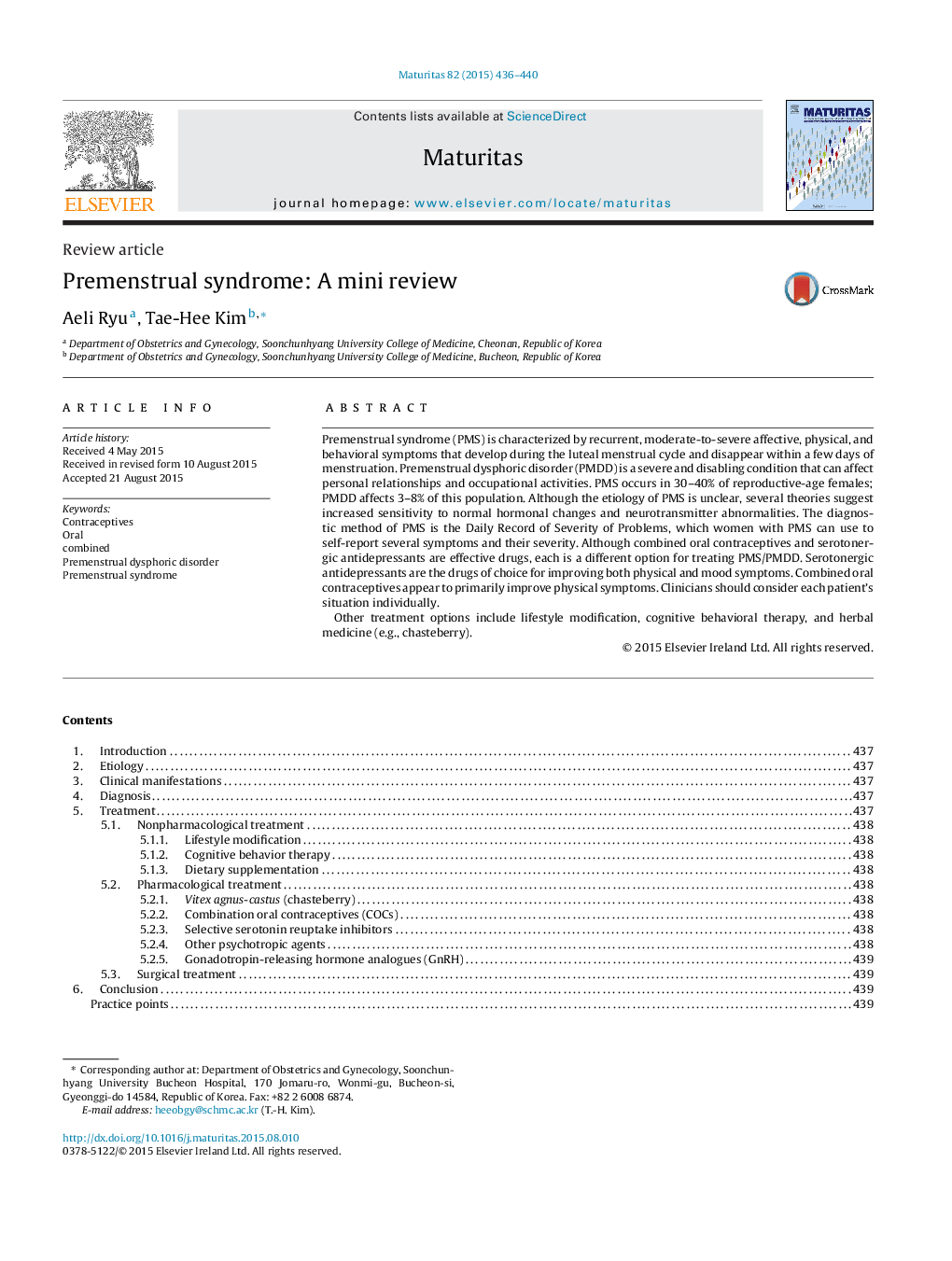| Article ID | Journal | Published Year | Pages | File Type |
|---|---|---|---|---|
| 1917097 | Maturitas | 2015 | 5 Pages |
•Premenstrual syndrome (PMS) is symptoms that develop during the luteal menstrual cycle.•Premenstrual syndrome (PMS) disappear within a few days of menstruation.•The etiology of PMS is unclear.•The diagnostic method of PMS is the Daily Record of Severity of Problems.•A stepwise therapeutic approach to PMS is recommended.
Premenstrual syndrome (PMS) is characterized by recurrent, moderate-to-severe affective, physical, and behavioral symptoms that develop during the luteal menstrual cycle and disappear within a few days of menstruation. Premenstrual dysphoric disorder (PMDD) is a severe and disabling condition that can affect personal relationships and occupational activities. PMS occurs in 30–40% of reproductive-age females; PMDD affects 3–8% of this population. Although the etiology of PMS is unclear, several theories suggest increased sensitivity to normal hormonal changes and neurotransmitter abnormalities. The diagnostic method of PMS is the Daily Record of Severity of Problems, which women with PMS can use to self-report several symptoms and their severity. Although combined oral contraceptives and serotonergic antidepressants are effective drugs, each is a different option for treating PMS/PMDD. Serotonergic antidepressants are the drugs of choice for improving both physical and mood symptoms. Combined oral contraceptives appear to primarily improve physical symptoms. Clinicians should consider each patient's situation individually.Other treatment options include lifestyle modification, cognitive behavioral therapy, and herbal medicine (e.g., chasteberry).
